Tweaking an Icon: Upgrading a Jeep Wrangler
Outfitting the Wrangler Unlimited for Towing
and Off-Road Travel
Article Date: June, 2012
Article and Photography by Mark Quasius
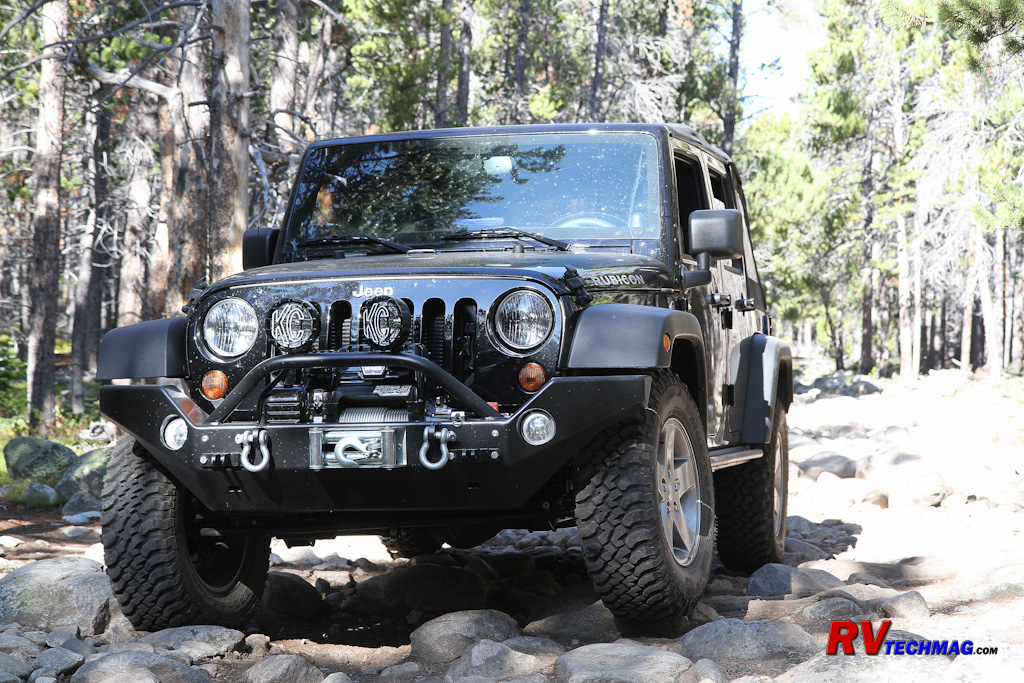
Jeep's Wrangler has been around seemingly forever. While its trademark seven slot grille remains basically the same,
today's Wrangler has seen a ton of improvements since the 1941 Jeep that carried our armed forces to victory in World War II.
One new addition was the Wrangler Unlimited, which offered a longer wheelbase and four doors. The Wrangler Unlimited
quickly became a hot seller with those buyers who wanted a Jeep but needed more practicality for everyday use.
RV owners with motorhomes quickly appreciated this, and the Wrangler Unlimited is now a common sight at many campgrounds.
The Wrangler is easy to tow behind a motorhome and is the perfect vehicle to take into town for supplies or go exploring off-road at the nearby
scenic areas typically near RV parks and campgrounds.
|
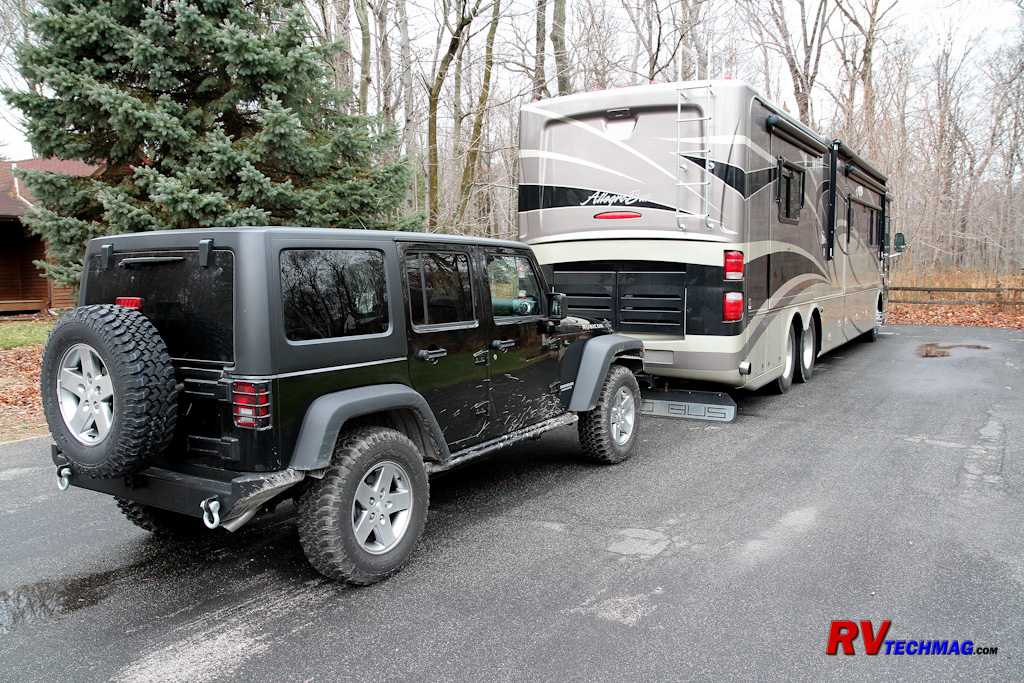
Wranglers are ideal for towing behind an RV and don't require any driveline disconnects or transmission lube pumps. Just connect the Jeep
to the RV, slip the transfer case into neutral, and go.
|
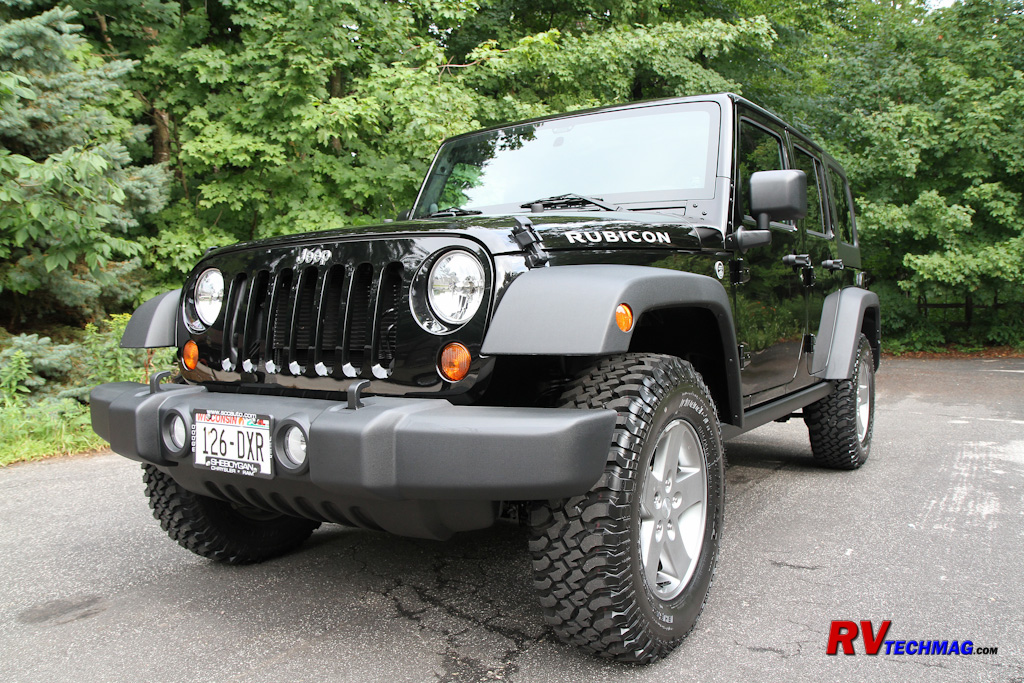
Stock Wranglers are capable but replacing the poly bumpers with heavy duty off-road bumpers and other components can turn the
Wrangle into a true off-road machine.
|
Off-Road Considerations
Normal tow bar base plates mount to the Jeep's frame and extend below the front bumper. This puts them in harm's way should
you get them hung up on a rock or bottom out if driving in deep ruts. Bending up a base plate means you won't be able to tow your Jeep home, so that
limits what you can do with your Jeep in the dirt.
The best choice is to find a bumper strong enough to handle a set of tow bar mounting brackets, so that you can connect your
bar directly to them. That way the area beneath your front bumper is clear and you'll maintain better approach angles and prevent damage to your
towing setup. Plus, by not requiring a base plate you can save that money and apply it towards a good front bumper design.
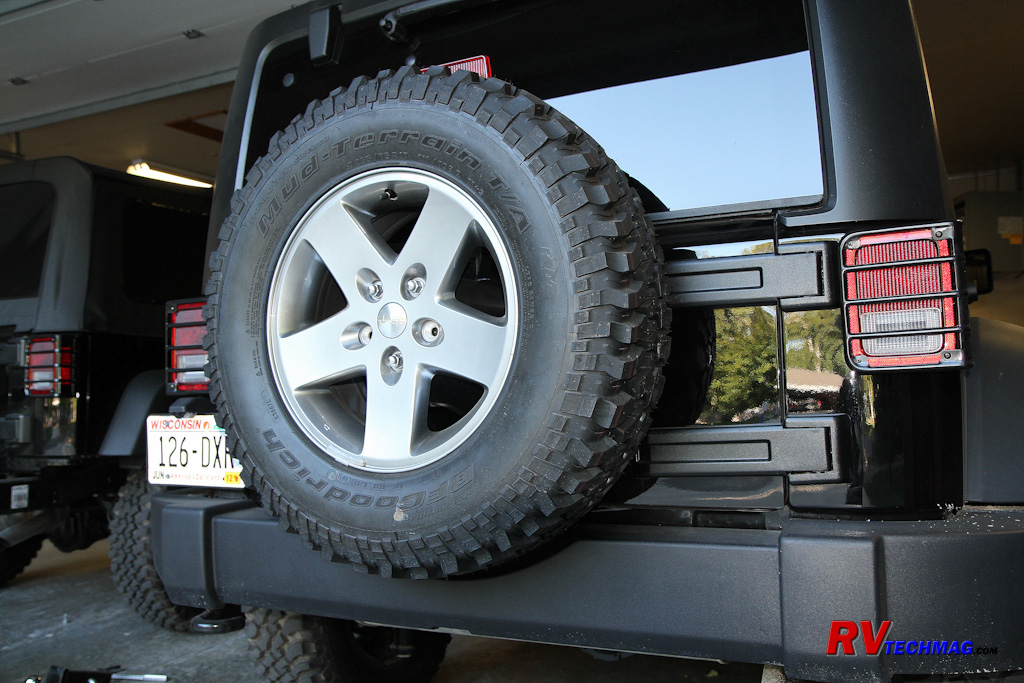
The original rear bumper was molded with a recess to aprovide clearance for the spare tire.
The Plan
After doing lots of research I decided to use Rock Hard 4x4 products due to their great looking design and a commitment to
quality and strength. The company also had custom tow bar brackets available for its front bumpers that fit either Blue Ox or Roadmaster tow bars.
To handle protection against damage from rocks and other objects when off-roading, I ordered up a complete set of skidplates
from Rock Hard, as well as a set of Mopar Rock Rails from my local Jeep dealer. To connect the Jeep's rear lights to the motorhome I installed a
Tow Daddy Plug-N-Tow module. The Tow Daddy module is the simplest and safest way to tie your existing lights into the RV's lighting feeds when towing.
Finally, an M&G auxiliary braking system was selected. It utilizes the motorhome's air brakes to proportionately operate the
towed vehicle's brakes. The module is fully contained under the Jeep's hood and does not tap into the Jeep's electrical or hydraulic braking systems.
It's failsafe and foolproof.
Installing the Bumpers
|
The rear bumper was pretty straight forward. Unbolt the old one and replace it with the new one. Be sure to get an extra hand
or at-least a floor jack to help as these bumpers are heavy.
The front bumper was the heart of the upgrade. Once the original plastic bumper and fog lights were removed and a few small
modifications to the frame were completed, the new Rock Hard bumper was installed. Then it was time to move on to the winch.
|
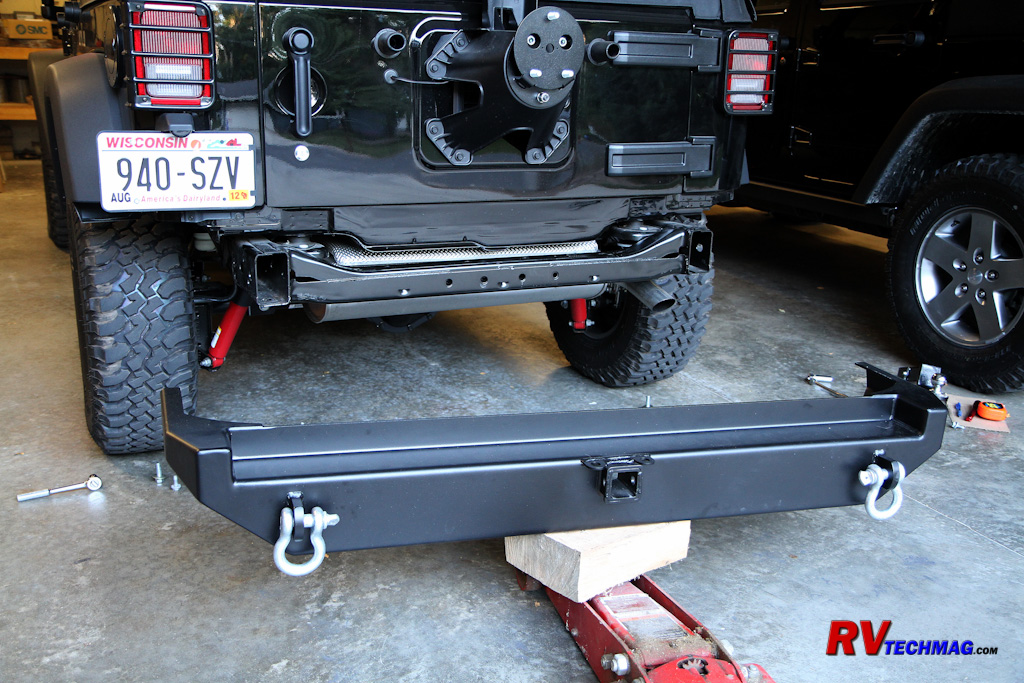
I used a floor jack to lift the substantial Rock Hard 4x4 bumper into place. The bumper included a hitch receiver and was fitted with
D-ring clevises for retrieval operations.
|
The bumper has a large opening for the winch to set into. It will accommodate the huge Warn Powerplant winch we chose, but
it fills the entire area and requires a few small modifications to fit properly. Once the winch was in and safely bolted up, the tow bar brackets
were next.
The factory bumper and the Rock Hard bumper mount with eight bolts. Utilizing four of these bolts to mount the tow bar
brackets is the strongest (and easiest) way to get the job done. So that's what I did.
|
Next a few holes were drilled to install the socket for the tow lighting umbilical cable as well as a connection for
the M&G auxiliary brake air line from the motorhome. A breakaway switch was then installed to activate the brakes should it ever become
disconnected from the motorhome when towing. Finally the D-ring shackles were hung on the front and a snap on license plate bracket was
mounted on the winch roller fairlead to make it legal.
|

A spare tire adaptor plate was included to raise the spare tire enough to clear the Rock Hard rear bumper.
|
|

The Wrangler's muffler is transversely mounted behind the rear bumper. A Rock Hard muffler skid plate was added to protect this
area when exiting downgrades or climbing over rocks.
|
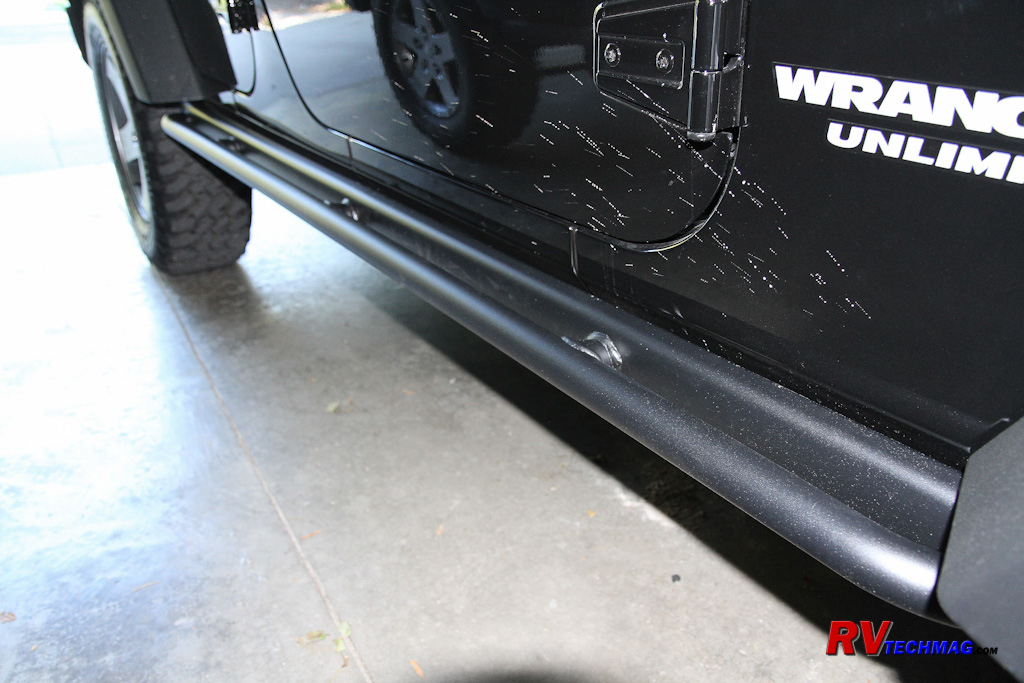
A set of Mopar Rock Rub Rails was ordered from the local Jeep dealer to protect the rocker panels from damage.
|
|
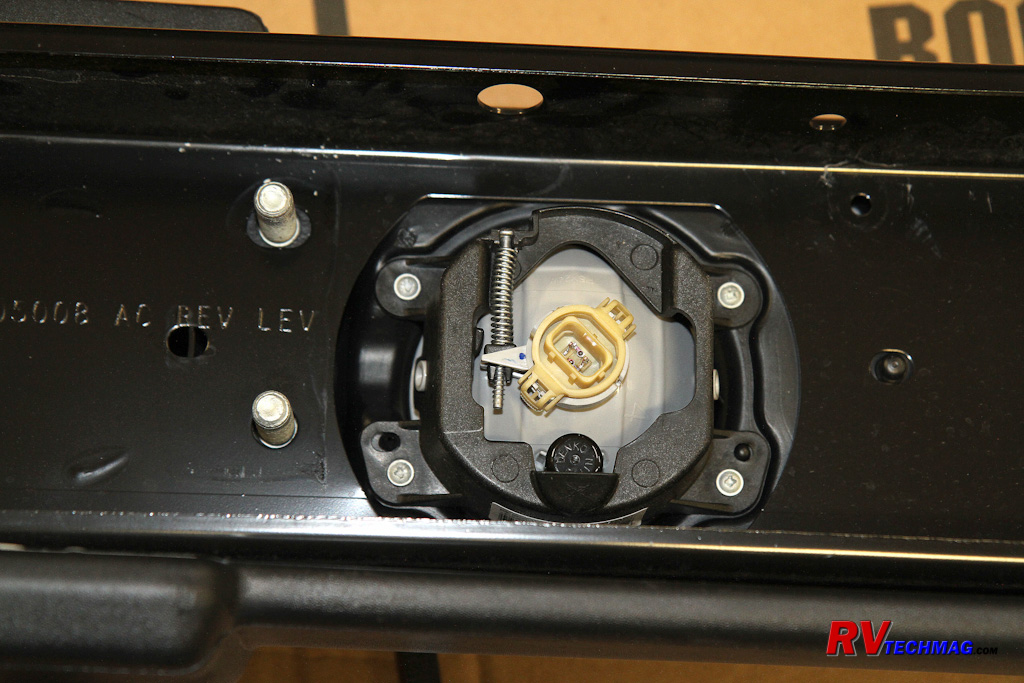
The original Jeep fog lights were mounted in center of the front bumper and held in place with four hex head screws.
|
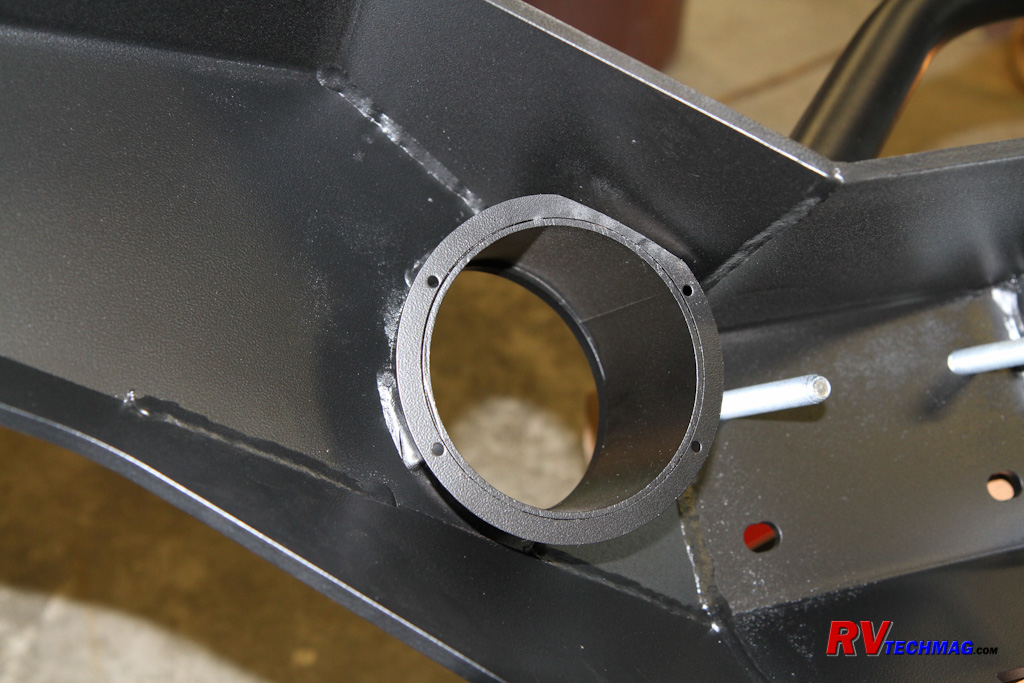
The Rock Hard front bumper is designed to accept the original Jeep fog lights and has pre-tapped holes to accept the mounting screws.
|
|
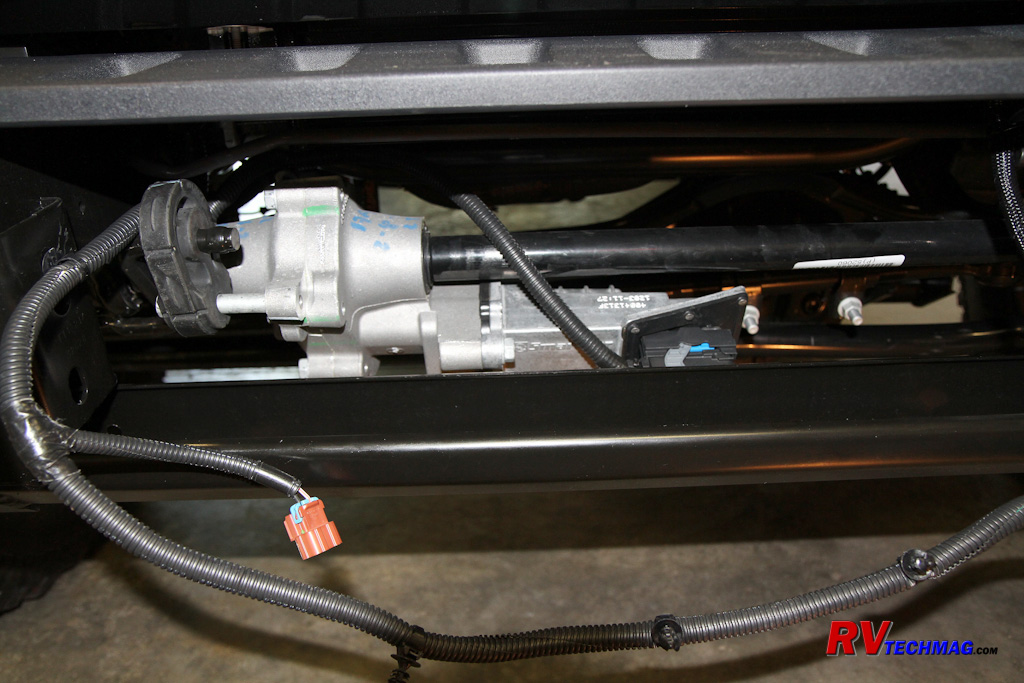
The Rubicon has an electric front sway-bar disconnect mechanism to aide articulation in off-road situations. This unit normally is
located just beneath and behind the front bumper in a vulnerable location. The Rock Hard front bumper is formed to fully protect the
mechanism.
|

A vacuum booster pump is part of the new 2012 Wrangler powertrain. It is located near the end of the driver's side front frame rail
and will interfere with most aftermarket front bumpers. Rock Hard supplied a custom bracket to relocate the pump so that it was out
of the way.
|
Return to Home Page
If you enjoyed this article be sure to recommend RVtechMag.com to your friends, like us on Facebook or Twitter
or subscribe to our RSS feed.



|
















